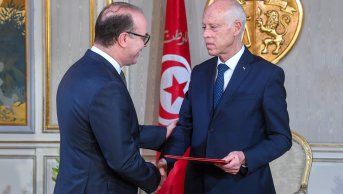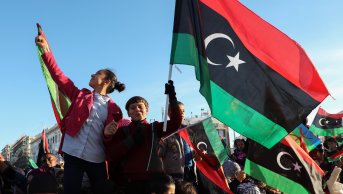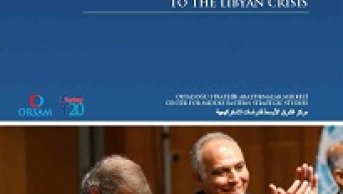Tunisia Elect New President
Tunisia completed its electoral marathon by holding the second round of presidential elections on 21 December 2014. Thus, the transitional period under the guardianship of the Constituent Assembly, which was responsible to shape the future direction of the country, has ended. According to preliminary election results announced by Tunisia Supreme Election Board, ISIE, Beji Caid Essebsi, the candidate of Nidaa Tounes, was elected president of Tunisia with 55.68% of the vote. Moncef Marzouki, other candidate who ran in second round, only won 44.32% of the vote. The voter turnout has fallen behind in the first round with 60.11%. Caid Sebsi’s first action as president will be authorizing Nidaa Tounes to form the government. Thus, by the beginning of 2015, the new political equation, which shape country’s next five years, will take its final form.
New Political Equation in Tunisia
The presidential and parliamentary elections held in the last quarter of 2014 have changed the political balance in Tunisia dramatically. The outline of the new political balance in Tunisia has emerged with the parliamentary elections and the presidential elections held in two rounds. In the following days, formation of a coalition government will give its final shape to this new political balance. As new president, Caid Cebsi will authorize the winner of the parliamentary elections, Nidaa Tounes to form the government and therefore the coalition negotiations, which have been held under the shadow of electoral race, will gain speed. Nidaa Tounes with 85 seats in parliamentary will intensify its efforts to reach quorum, 109 seats. At this stage the most significant challenge that should be tackled by coalition partners is to form a common approach for programs and solutions to economic, security and political issues. In this process, Nidaa Tounes is going to be the dominant actor by controlling all vital political posts including presidency and prime ministry as well as majority of parliament. So this will directly affect Tunisia's political future and the democratization process started after 2011.
Tunisian political history has been shaped by a strong presidential system. Former presidents Habib Bourguiba and Ben Ali seized excessive political power in a disproportionate manner in the country and in turn, this brought “personizalition of power”. Tunisia ruled by a strong presidential system dominated by a single party starting from independence until the removal of Ben Ali in 2011. Therefore, the post-2011 reforms and the 2014 Constitution aimed to design a new political system, which prevents a similar political domination in the future. In this context, two major precautions were taken in the country, which are the adaptation of the Hare quota system in presidential election in order to prevent the domination of a single party in parliament, and a mixed system in which powers are shared among the prime minister and president. Thus, checks and balances are framed in the exercise of political power between institutions.
However, the next five years carry vital importance because customs regarding the implementation of this new system will be created during this new period. So the new distribution of power will be tested by the new president, prime minister and government; and new political practices will be introduced in the country. In this regard, the relationship between the new president Caid Cebsi and the new prime minister and his cabinet will determine interpretation and implementation of powers. In addition to that, with the victory of Caid Sebsi in presidential election, Nidaa Tounes gains the control of vital posts such as presidency, prime ministry and, assembly spokesmanship. This raises fears and possibility of a single-party regime under Nidaa Tounes in Tunisian political life.
Fears of Single-Party Regime and Possibilities
Despite the domination of Nidaa Tounes in Tunisian political life by seizing nearly all important political posts and the fears of single-party regime in the country; today politics in Tunisia is different from pre-2011 politics and has been transformed considerably. Still there are possibilities of setbacks in terms of authoritarianism and losing gains achieved after 2011, which should not be underestimated. However, there are serious constraints for restructuring single-party regime by Nidaa Tounes in Tunisia.
Primarily, Nidaa Tounes suffers from a lack of party cohesion unlike Democratic Constitutional Rally and it makes the party more fragile and vulnerable to crisis. Caid Cebsi as a politician, who served both during Bourguiba and Ben Ali eras, could easily gather the members of Destourian socialists, who were expelled during Ben Ali and members of former ruling party, Democratic Constitutional Rally under the banner of Nidaa Tounes. These two factions occupy the centre of the party. In addition, the party also includes a large number of parties and civil society organizations from left-wing to liberals. This diversity, as a result of covering political figures from various political stances, makes it a loose alliance. As a result, maintaining party cohesion when crisis and challenges emerges will be the most severe constraint and challenge in the upcoming days.
Anti-Nahda rhetoric and political stance has been the glue binding the loose alliance of Nidaa Tounes so far. However, Nidaa Tounes forces to soften its unpermissive rhetoric due to Nahda’s approach that is based on negotiations and conciliation both in parliamentary and presidential elections. Ghannouchi, leader of Nahda, declared the election results as "Tunisia's victory" after the parliamentary elections. Nahda chose not to run a candidate in presidential election and so help to ease political tension. Moreover Ghannouchi released a statement calling protesters to calm down and respect the election results in order to end the protests began in poor south governorates as a response to Caid Cebsi’s victory following second round of presidential election. Hence it became more difficult for Nidaa Tounes to sustain its party unity with anti-Nahda political discourse in the future.
Finally, the new political system forced Nidaa Tounes to compromise because in order to form a government Nidaa Tounes has to establish a coalition. The party, which already has serious concerns about party cohesion, will need to ensure the integrity of coalition government in the future. Nidaa Tounes could not create harmony within Salvation Front that was established in 2013 as a counter force against the troika government formed by Nahda-CPR and Ettakatol; and left it. In addition, Nidaa Tounes failed to get the support of the Popular Front, which criticized both Marzouki and Caid Cebsi and announced it will not support these two candidates in the second round. These two examples reveal the probability that the relationship between left-wing, secular and nationalist parties and Nidaa Tounes would be more tense than estimated.
Conclusion
With the following the electoral race, acceptance of election results by political parties, political actors and Tunisians shows that “elections” became the only game in the town. In addition the successful implementation of the 2014 electoral timetable has ended the "temporary" period in the country. The main priorities in the coming period will be the normalization of the new system. However the success of Nidaa Tounes in parliamentary election and presidential elections has revived possibilities for authoritarian setbacks. Under the current circumstances there are serious obstacles for Nidaa Tounes if it will aim to reinstall one-party regime; but considering the fragility of democratization process as well as Tunisians swinging between former regime nostalgia and the pains of change, the seriousness of this possibility is strongly remarked.












